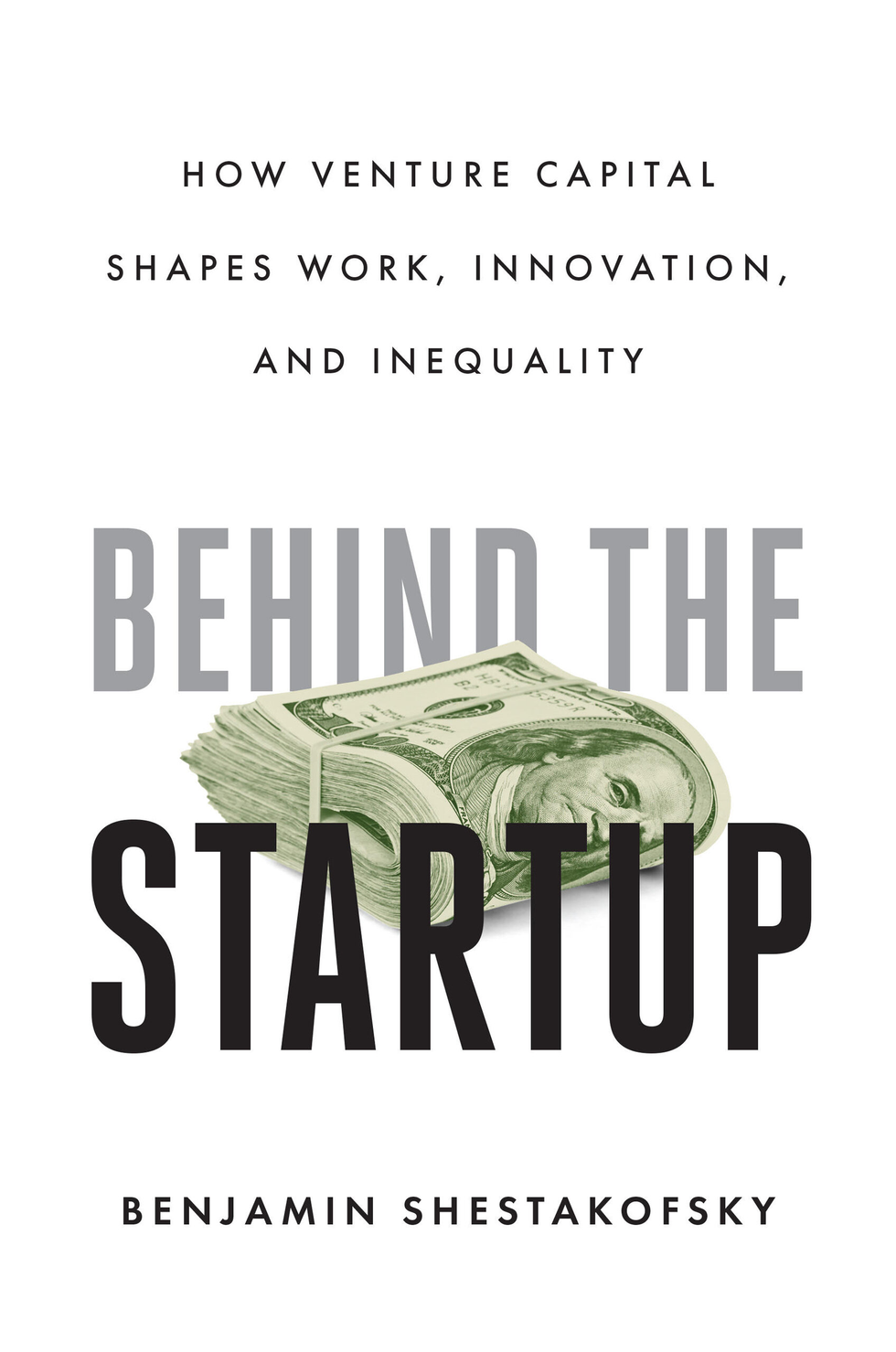The Messy Reality Behind a Silicon Valley Unicorn
A VC-backed startup’s push for growth left little time for actual engineering

When I began my research, AllDone had just secured its first round of venture capital funding to fuel its quest to build an “Amazon for local services.” The company had built a digital platform connecting buyers and sellers of local services—housecleaners, plumbers, math tutors, and everything in between—across the United States. Although the influx of $4.5 million was cause for celebration, it also incited a sense of urgency among employees in the San Francisco office. As Carter, AllDone’s president, intoned in an all-staff email:
We know what the future of local services is. But we’re not the only people that know this is the future. And, more importantly, there’s lots of people—smart, scrappy, and well-funded people—building our vision. Someone is going to do it. And it looks like it’s going to happen soon. We just have to finish building faster than anyone else and we will win.
Demonstrating AllDone’s potential for explosive growth was the founders’ highest priority—and that priority shaped the company’s strategy and structure. AllDone faced extraordinary pressure from venture capital investors to grow as quickly as possible, which required finding new ways to attract users and increase their activity on the platform. At the same time, AllDone’s leaders knew the firm would be worthless if it couldn’t keep its product functioning properly and provide services to its ever-expanding user base.
So the engineers in San Francisco set out to meet investors’ expectations by finding new ways to grow the company. Meanwhile, AllDone’s managers hired contractors in the Philippines to perform routine information-processing tasks. Some of the contractor work involved operations that software alone was unable to accomplish. But engineers also offloaded processes that software was technically capable of handling so that employees in San Francisco could remain focused on their strategic goals. Managers viewed AllDone’s Filipino workforce as a crucial contributor to the company’s rapid growth. It was, in the words of two executives, “the magic behind AllDone.”

Startup Life After the First Funding Round
In the period immediately following the first round of funding, AllDone’s founders prioritized two kinds of expansion: growing the user base and hiring more staff for the San Francisco team. First, to have any hope of success, AllDone would have to bring a critical mass of users on board. While the company had enrolled 250,000 “sellers” of services, “buyers” were submitting only about 7,000 requests for services per month. The team aimed to boost buyer requests by nearly 50 percent over the next quarter, demonstrating the kind of explosive growth that would make AllDone an attractive target for future VC funding rounds. AllDone’s software developers would thus be mobilized to overhaul the platform and make users’ experiences more intuitive and engaging.

This article is adapted from the author’s new book, Behind The Startup: How Venture Capital Shapes Work, Innovation, and Inequality (University of California Press, 2024).
Executives planned to use most of the new money to hire more engineers and designers. Recruiting them soon became an all-consuming task that engaged AllDoners both inside and outside of the office, leaving little time for the staff to run the business. The recruitment effort was led by Peter, AllDone’s CEO. First, an external headhunter reviewed résumé submissions and scheduled introductory phone calls between promising applicants and Peter. Next came a coding challenge devised by the company’s four software engineers, followed by a phone interview with one of the engineers to further evaluate each applicant’s technical prowess.
Those who passed that test moved on to a daylong interview in the office, which consisted of 90-minute one-on-one sessions with each of the four current engineers. Candidates would also spend an hour with Josh, the product manager, and finally another hour with Peter before being sent off in the evening with a beer stein emblazoned with the AllDone logo. Each member of the hiring committee would write an evaluation that everyone involved would read before conferring in person to discuss the candidate’s fate. For weeks at a time, the hiring team interviewed one or two candidates per day.
The engineers’ heavy involvement in the laborious and time-consuming hiring process reduced their productivity, which threatened to slow the company’s progress at a time when investors expected precipitous growth. Although I had come to AllDone because of my interest in studying work and life inside a startup, my field notes reflected my surprise: “Since I began at AllDone, there doesn’t appear to be much work going on at all, at least as far as software production is concerned.” My observations were later confirmed by Josh, AllDone’s product manager, when he reported that during the first quarter of the year, AllDone’s four software engineers had “accomplished very little” in terms of their production goals because they had been “very, very focused on recruiting,” which he said had consumed at least half of their work hours.
How, then, did AllDone run and even grow its platform when its software developers were frequently too busy with recruiting to do their jobs?

The Human Machine Behind the Software
AllDone’s managers increasingly turned to the company’s digital assembly line in the Philippines, where contractors performed computational work that stood in for or supported software algorithms.
AllDone had hired its first work-from-home Filipino contractor a few months after the company’s launch. Within a year, the team had grown to 125, and during my research it expanded to 200. Most contractors were college educated and between the ages of 20 and 40; about 70 percent were women. Executives often called these workers AllDone’s “human machine.”
Contractors logged in to AllDone’s administrative portals to complete various sets of tasks. Most notably, a division that eventually numbered nearly 100 people handled the company’s primary function of manually matching buyer requests with sellers from AllDone’s database of service providers—a process that users likely assumed was automated. Another division onboarded new sellers by classifying the services they provided, running an array of checks to verify their trustworthiness, and proofreading their profiles. A third division was responsible for generating brief descriptions of AllDone sellers; these blurbs were then compiled on Web pages designed to boost AllDone’s position in search-engine rankings. In total, Filipino contractors executed over 10,000 routine tasks per day.
Filipino contractors’ wages and work hours were determined by their jobs: On average, contractors earned about $2.00 per hour and worked about 30 hours per week. While AllDone paid its Filipino workers only a tiny fraction of what San Francisco–based employees earned, their compensation substantially exceeded the Philippines’ legal minimum wage. As independent contractors, these workers didn’t receive paid vacation, sick leave, health insurance, or retirement benefits, nor did they enjoy the perks (like free food) available to workers in the San Francisco office. Contractors were also responsible for providing their own computer equipment and Internet connections.
Contractors effectively functioned as artificialartificial intelligence, simulating the output of software algorithms that had yet to be completed.
Companies seeking workers to do routine information processing often post tasks to on-demand “crowdwork” platforms like Amazon Mechanical Turk. In AllDone’s case, the importance of its contractors’ tasks to the company’s success meant that an open call fulfilled by anonymous workers simply wouldn’t do. AllDone’s staff in San Francisco considered AllDone Philippines an integral part of the organization and built enduring relationships with contractors, who typically performed the same assigned task for a period of months or even years. Newly hired contractors watched training videos to learn how to perform operations using AllDone’s proprietary administrative software. Managers of the Filipino divisions distributed weekly quizzes and offered coaching to ensure that workers understood AllDone’s rules and procedures.
Yet at times, even high-ranking managers in the Philippines were excluded from important decisions that would affect their teams. In one meeting I had with Carter, AllDone’s president, he explained that AllDone’s engineers had recently made a change that suddenly increased some contractors’ workload by 60 percent. “We should have told them ahead of time so they would know it’s coming,” Carter said, wincing a little and shrugging sheepishly, “but it just didn’t occur to us.” For most staffers at AllDone San Francisco, their Filipino colleagues were effectively invisible human infrastructure that they could take for granted.
The efforts of AllDone’s Filipino workforce had the desired effect. During the first quarter of the year, AllDone met its user-growth goal, receiving almost 50 percent more buyer requests than in the prior three-month period. During the second quarter, that metric would increase again by 75 percent.
AllDone’s Filipino contractors made these substantial gains possible by laboring alongside computer code. In some instances, their efforts complemented software systems because the workers’ skills allowed them to perform tasks that algorithms couldn’t yet reliably manage, like writing original blurbs about specific sellers. In other cases, AllDone relied on workers to imitate software algorithms, taking on functions that computers were technically capable of performing but that developers in San Francisco believed would have been too costly or time-consuming to code themselves.
Relying on Artificial Artificial Intelligence
Because AllDone’s search-engine optimization strategy was yielding an ever-increasing volume of buyer requests, the company had to connect far more buyers with sellers than ever before. Indeed, this matching process was AllDone’s core function. But instead of expending scarce engineering resources on matching buyers with sellers, AllDone relied on staff in the Philippines to manually construct every introduction. This arrangement allowed software engineers to devote their energies to experimenting with new projects that could “move the needle,” or significantly increase key metrics (such as the number of buyer requests) that VC investors watched to assess the startup’s success.
Members of the Filipino matching team used a Web portal that displayed the details of each new buyer request. They began their work by vetting requests and deleting those that appeared to be fraudulent (for example, a request placed by “Mickey Mouse”). The portal then provided team members with a rough, algorithmically generated list of local AllDone sellers who might be eligible to fulfill the request because they worked in relevant service categories. Workers would select all the sellers whom they judged to be appropriate matches, and the sellers would then be automatically notified so they could provide quotes for the service. The Filipino contractors effectively functioned as artificial artificial intelligence, simulating the output of software algorithms that had yet to be completed.
It’s too soon to forecast a future of full automation or a world without work.
AllDone’s users never knew that human workers, rather than a computer algorithm, had handcrafted each introduction. To keep up with the rapid rise in request volume, the matching team more than doubled in size during the first phase of my research, increasing from 30 to 68 people. Additionally, local managers cross-trained members of another division on the matching function so that when user activity peaked, more workers could be immediately mobilized to assist.
There were many other processes that AllDone’s engineers agreed could have been automated yet were instead handled by contractors. These included screening out sellers whose names appeared on the U.S. Department of Justice’s national sex-offender registry, adding badges to seller profiles that passed a series of verifications, checking sellers’ professional license numbers against relevant state databases, running voluntary criminal-background checks on sellers, and sending customized emails apologizing to buyers whose requests received zero quotes from sellers.
Quick and Dirty Tests
The San Francisco team further reduced the engineering burden that came with developing new product features by having contractors support what AllDone’s software engineers called “quick and dirty” tests. That is, Filipino workers would manually execute algorithmic tasks that were under consideration for automation, providing a rough approximation of a project’s potential before developers invested time and resources in coding the software.
In one such case, the product team wanted to determine whether they should add information from sellers’ profiles on the consumer-review website Yelp to their AllDone profile pages. They theorized that this additional information would enhance the perceived trustworthiness of AllDone sellers and increase buyer requests. Yelp offers free tools that allow software developers to embed Yelp users’ business information directly into their own websites. However, Bill, the AllDone engineer in charge of the project, preferred not to spend his time learning how to use Yelp’s tools without first knowing whether the new feature was likely to succeed. So he devised a test whereby contractors in the Philippines manually searched for 9,000 AllDone sellers on Yelp and gathered information from their Yelp user profiles. Bill then put this information on relevant AllDone pages. Upon finding that it did not have a statistically significant effect on buyer behavior, he abandoned the test.
Throughout my research, AllDone had between four and eight software engineers on staff. Without the Filipino team, the startup would have been forced to abandon some functions of its website and to reallocate some of its engineering resources toward building software infrastructure. The Filipinos’ reliable performance of important tasks helped the company achieve the precipitous growth demanded by venture capital investors to rapidly increase the company’s valuation. While the team in San Francisco threw parties for new recruits, enjoyed catered meals, and created the impression of technological wizardry, Filipino contractors were toiling behind the scenes.
AllDone’s story highlights the unseen but ongoing role of human workers on the frontiers of automation, and it demonstrates why it’s too soon to forecast a future of full automation or a world without work. The interdependence between generously compensated software engineers in San Francisco and low-cost contractors in the Philippines suggests that advances in software automation still rely not only on human labor, but also on global inequalities.
- Five DO's and DON'Ts on Building Your Robotics Startup ›
- This VC Is Betting Big on Flying Taxis and Scooters ›



